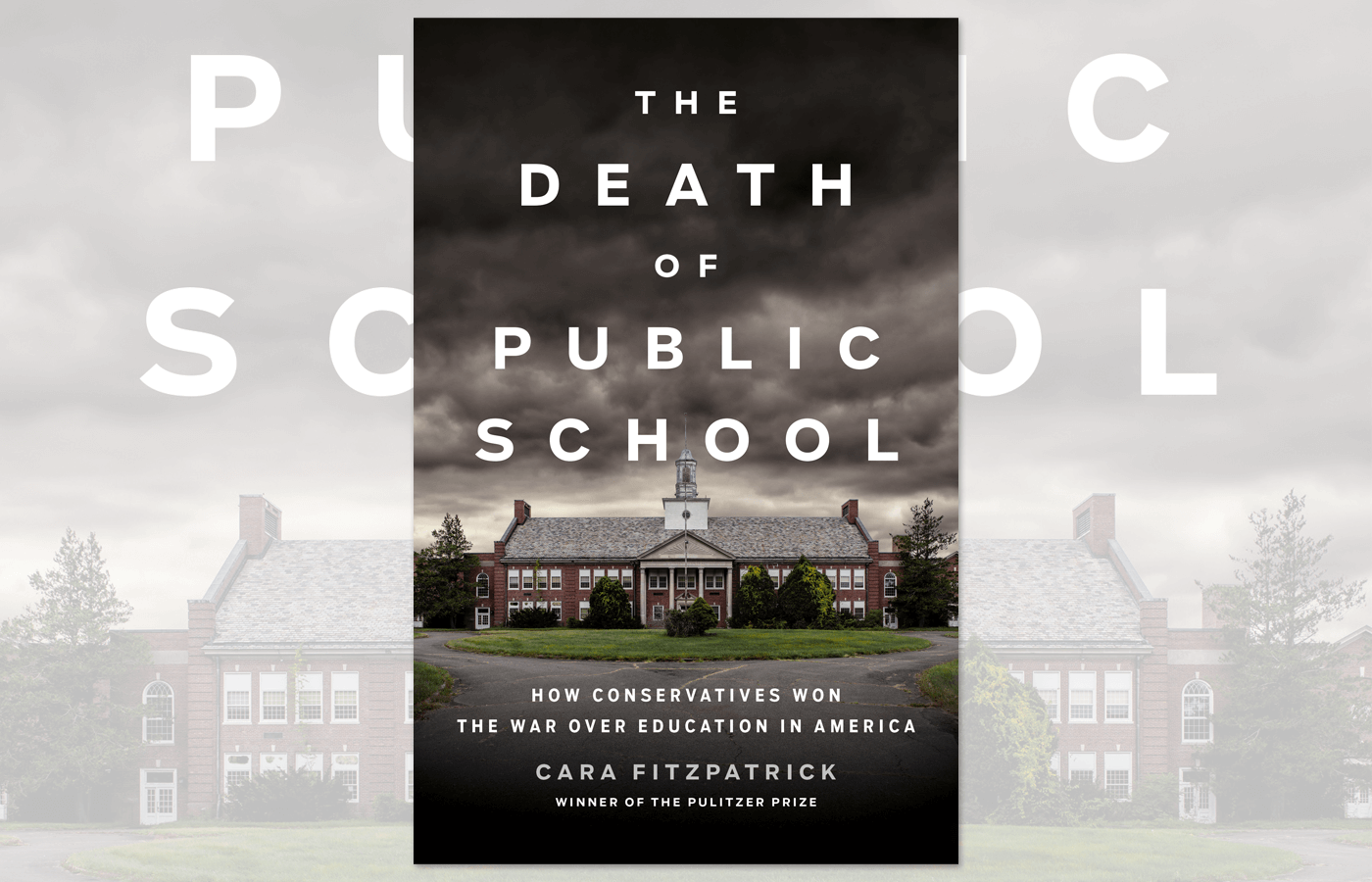
Excluded: How Snob Zoning, NIMBYism, and Class Bias Build the Walls We Don’t See
by Richard Kahlenberg
Public Affairs, 2023, $30; 352 pages.
As reviewed by Matthew Levey
Richard Kahlenberg, a bespectacled, balding, Harvard-educated lawyer who grew up in a well-off suburb of Saint Paul, Minnesota, is a curious character to be called controversial. He has long advocated for progressive education policies, particularly school integration, doing so for the last 24 years from a perch at the left-leaning Century Foundation. Two former college presidents, William G. Bowen of Princeton University and Michael S. McPherson of Macalester College, wrote that Kahlenberg “deserves more credit than anyone else for arguing vigorously and relentlessly for stronger efforts to address disparities by socioeconomic status.”
Kahlenberg supports class-based (and race-neutral) affirmative action in education. So, in 2018, when he wrote expert reports and testified for the plaintiffs in cases that led, in June 2023, to the U.S. Supreme Court barring the use of race in college admissions, his arguments seemed consonant with his prior views. Nonetheless, this spring he left his longtime employer “to pursue new opportunities.” The New York Times ran a 2,200-word profile of the breakup.
 But questioning race-based affirmative action isn’t his only offense against progressive politics. In Excluded, Kahlenberg wonders why reliably liberal voters in places such as Great Neck and Scarsdale (New York), Atherton (California), and Brookline (Massachusetts) practice extreme forms of housing discrimination. “Single-family zoning,” which limits and often prevents the construction of more-affordable duplex and triplex apartments, Kahlenberg writes,
But questioning race-based affirmative action isn’t his only offense against progressive politics. In Excluded, Kahlenberg wonders why reliably liberal voters in places such as Great Neck and Scarsdale (New York), Atherton (California), and Brookline (Massachusetts) practice extreme forms of housing discrimination. “Single-family zoning,” which limits and often prevents the construction of more-affordable duplex and triplex apartments, Kahlenberg writes,
is a more indirect, but perhaps no less effective version of China’s household registration [policy]: it effectively bars many would-be migrants from seeking good jobs and pursuing the American Dream by keeping housing unaffordable in high-growth regions, at a terrible cost to individuals and society.
Lawn signs in these communities may claim all are welcome, but their zoning laws are a neon “no vacancy” sign. Kahlenberg argues that laws constraining the housing supply and excluding low-income families from living in areas with greater opportunity are a major cause of both educational disparities and housing shortages. Although the author might demur, Excluded reminds this reviewer of Ronald Reagan’s 1987 plea to Mikhail Gorbachev, standing at the Brandenburg Gate, to “tear down this wall.”
Six years ago, in The Color of Law: A Forgotten History of How Our Government Segregated America, Richard Rothstein catalogued federal policies that, for decades, made home mortgages unavailable to most people of color. Kahlenberg writes that this discrimination was compounded when, between 1916 and 1936, 1,234 cities established zoning density rules. When the Fair Housing Act was passed in 1968, the suburbs adopted their own density rules. Today, on one side of Nassau County’s Meadowbrook Parkway, the town of Merrick has a population density of 5,200 residents per square mile and an average household income of $184,000. Just 4 percent of families rent their homes. Across the highway in Freeport, the population density is 81 percent higher, the median income is 46 percent lower, and 33 percent of families rent.
How is this relevant to education policy? While education reformers celebrate the expansion of charter schools, vouchers, and Education Savings Accounts, most parents send their children to nearby schools. Even in Brooklyn, with one of the densest public transportation networks in the world, the school I led struggled to enroll students from neighborhoods filled with failing schools just a few miles away from us.
Excluded’s case for how zoning reform could support school choice is illustrated by several case studies. Trapped in high-poverty Springfield, Massachusetts, Samantha (for privacy reasons, Kahlenberg does not give her last name), a single mother of three, dreamed of leaving. A high school dropout, she worked as an aide at a rehabilitation hospital while her kids, two of whom have autism, struggled in schools where most students couldn’t read or add. But in 2019 Samantha caught a break and received a type of Section 8 voucher that allowed her to move to nearby Longmeadow, where the median household income is triple that of Springfield. Longmeadow students achieve at rates far above the state averages. Samantha worried that the neighbors would be wary of her low-income status, but she told Kahlenberg that “the neighbors are great. . . . They play with my kids perfectly fine.” She loves her kids’ schools.
Unfortunately, only 45 such vouchers were available in Massachusetts in 2021. School reformers should be natural allies with capitalist property owners in unleashing the power of markets to supply more housing at lower cost. Demanding full funding for the Section 8 program that helps needy families pay market rent might feel just, but this is but shouting in the wind, given Washington’s partisan gridlock. Families like Samantha’s need access to duplex and triplex apartments with more-affordable rents. Now.
In 2007 I was witness to an unplanned experiment along these lines. The elementary school serving a public housing complex in a once-redlined neighborhood two miles from my own family’s apartment had declined to the point where its low academic results coincided with dangerous structural failures. The school was shuttered, and its 400 or so students were redistributed to four of the most highly sought-after elementary schools in one of the wealthiest zip codes in the country. And that’s how my son met his friend Richard.

My primary recollection of this centers on what didn’t happen. No protests, no comments about students who didn’t “belong.” I met Richard’s mother a few times when the boys played together after school. She worked at the post office. I remember that Richard could mimic the subway-train conductor’s spiel for almost any stop on the route. In middle school he and my son lost touch, but Richard eventually attended a selective high school where 40 percent of low-income graduates finish college in four years. The national average for the general population across all income brackets is 46 percent.
In many metropolitan areas, such as Dallas and Columbus, Ohio, which Kahlenberg also profiles, there are opportunities to increase school choice and improve educational outcomes by eliminating or reducing exclusionary zoning. He praises Minneapolis for eliminating single-family zoning but notes that this change was part of a package of reforms, including removing off-street parking requirements and up-zoning transit corridors, that led to the Twin Cities’ housing boom.
Zoning reform alone will not be a silver bullet that fixes American educational dysfunction. Social factors, such as family structure and parents’ prior education, will continue to influence student achievement even as areas of highly concentrated poverty are broken up. But at a time of low social cohesion and few opportunities for bipartisan political effort, freeing property owners to build more housing more easily could furnish another arrow for the reform quiver. Wise planning officials, smart philanthropists, and ambitious mayors would do well to consider Kahlenberg’s latest recommendations.
Matthew Levey founded the International Charter School and writes on K–12 education.
This article appeared in the Winter 2024 issue of Education Next. Suggested citation format:
Levey, M. (2024). Zoned In: Zoning reform could expand school choice and promote educational equity. Education Next, 24(1), 86-87.





